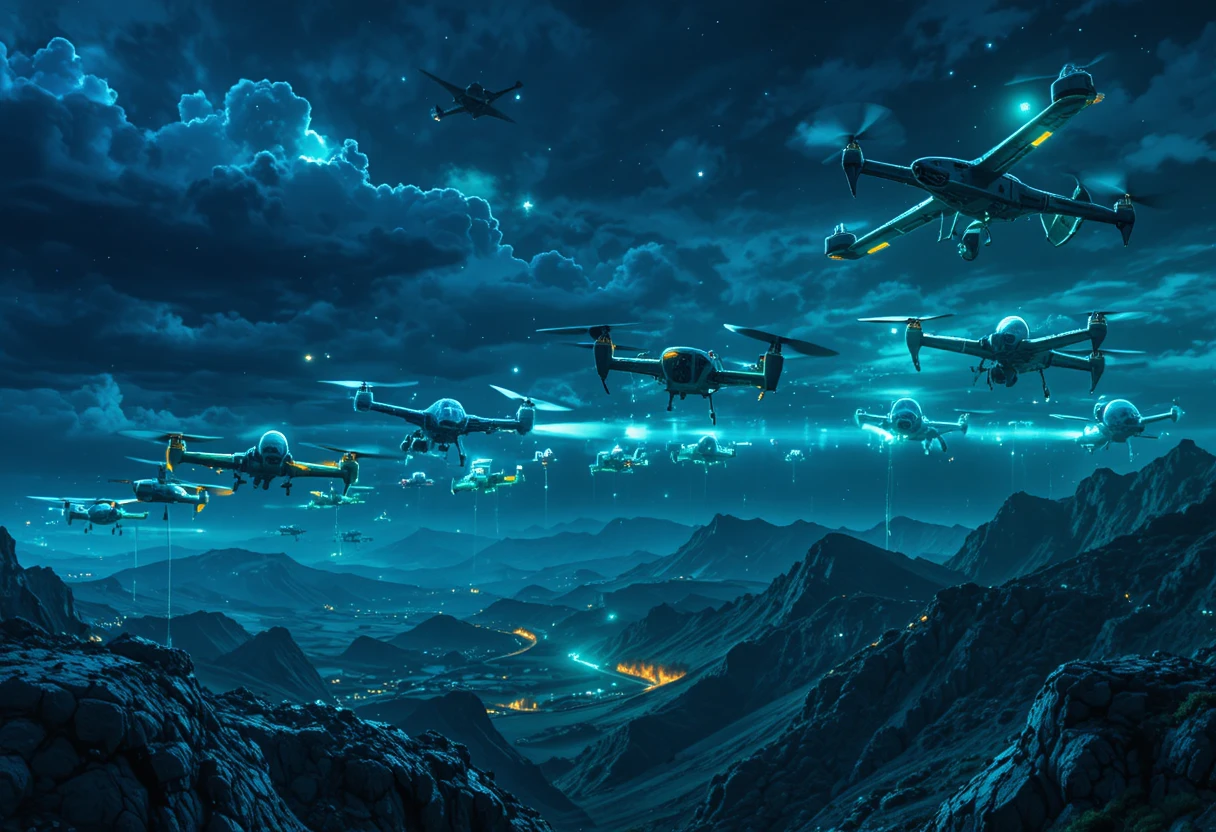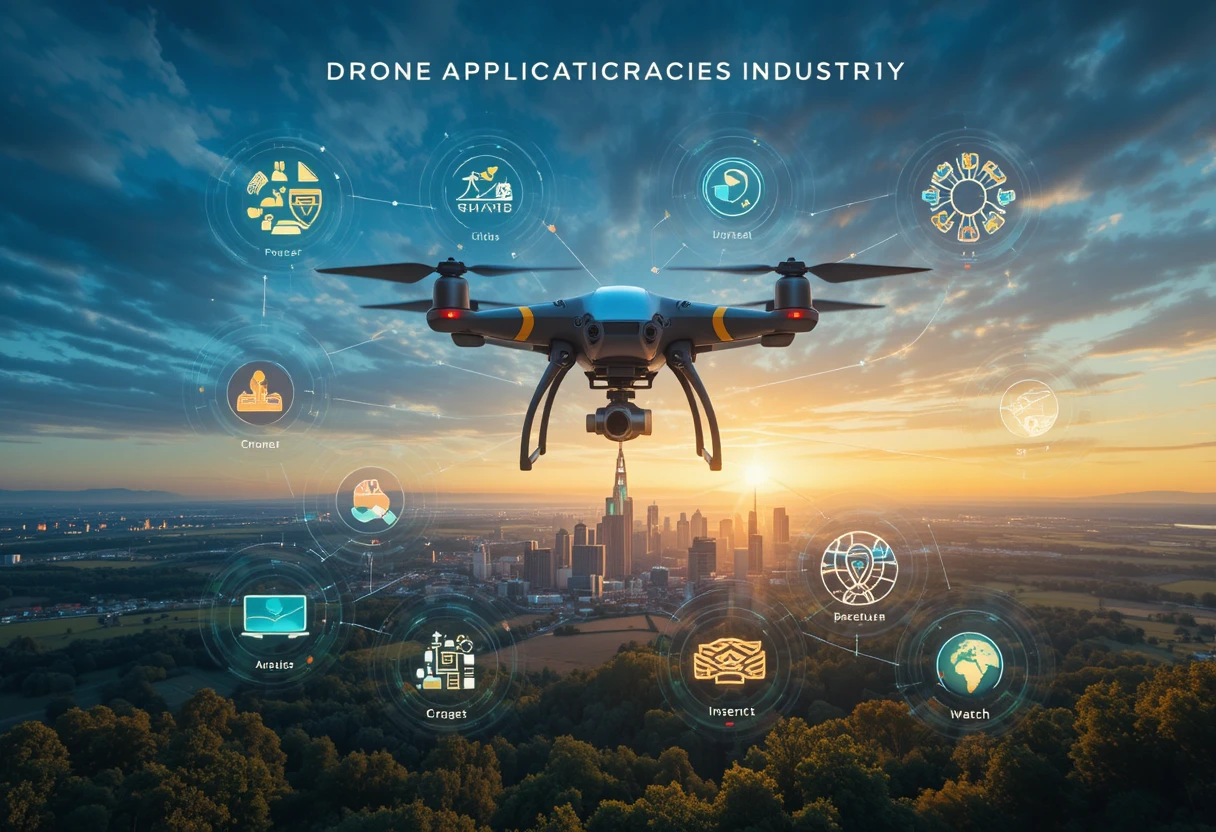Drones, also known as unmanned aerial vehicles (UAVs), have emerged as transformative tools reshaping industries, enhancing efficiency, and redefining possibilities in both professional and personal contexts. From delivering packages to capturing stunning aerial footage, drones combine advanced technologies like sensors, artificial intelligence (AI), and connectivity to perform tasks with precision and autonomy. This 3000-word article explores the fundamentals, applications, challenges, and future of drones, providing a comprehensive overview of their profound impact on modern society.
What are Drones?
Drones are remotely piloted or autonomous aircraft that operate without an onboard human pilot. Equipped with sensors, cameras, GPS, and communication systems, drones can navigate environments, collect data, and perform tasks ranging from surveillance to delivery. Controlled via remote operators, mobile apps, or pre-programmed algorithms, drones vary in size, from small consumer models to large industrial UAVs, and are powered by batteries or fuel for extended operations.
A Brief History of Drones
The origins of drones trace back to military applications in the early 20th century, with early examples like the 1917 Kettering Bug, an unmanned bomb-delivery aircraft. World War II saw advancements with radio-controlled drones used for target practice. The 1990s marked a shift toward modern UAVs, with military drones like the Predator used for reconnaissance in conflicts.
The 2010s brought consumer drones to the forefront, with companies like DJI launching affordable models like the Phantom series, popularizing aerial photography. Advances in AI, miniaturization, and battery technology have since expanded drones’ applications, making them integral to industries like agriculture, logistics, and entertainment. Today, the global drone market is valued at billions, with widespread adoption across sectors.

How Drones Work: Core Components
Drones are sophisticated systems integrating hardware, software, and connectivity to achieve autonomous or remote-controlled operations.
Airframe and Propulsion
The airframe, typically made of lightweight materials like carbon fiber or plastic, provides structural integrity. Propulsion systems, including electric motors or combustion engines, power rotors or propellers. Quadcopters, with four rotors, are common for stability and maneuverability.
Sensors and Navigation
Drones rely on sensors for navigation and data collection:
- GPS: Enables precise location tracking and autonomous flight paths.
- Cameras: Capture high-resolution images or videos for photography, mapping, or surveillance.
- LIDAR and Ultrasonic Sensors: Measure distances for obstacle avoidance and 3D mapping.
- Inertial Measurement Units (IMUs): Combine accelerometers and gyroscopes to maintain orientation and stability.
Flight Controllers
Flight controllers, the drone’s onboard computer, process sensor data and execute commands. They stabilize flight, manage autonomous tasks, and ensure safety features like return-to-home functions.
Connectivity
Drones use Wi-Fi, radio frequencies, or 5G for communication with controllers, apps, or cloud platforms. Long-range drones rely on satellite links for extended operations.
Payloads
Payloads, such as cameras, thermal sensors, or delivery compartments, define a drone’s function. For example, agricultural drones carry multispectral sensors, while delivery drones have cargo holds.
Software and AI
Drone software includes flight planning apps, real-time monitoring systems, and AI algorithms for tasks like object detection or autonomous navigation. Platforms like DJI Fly and Pix4D support mission planning and data analysis.
Types of Drones
Drones vary in design, purpose, and capabilities, catering to diverse applications.
Consumer Drones
Consumer drones, like the DJI Mavic or Parrot Anafi, are compact and affordable, designed for photography, videography, and recreational use. They feature user-friendly controls and high-quality cameras.
Commercial Drones
Commercial drones, such as the DJI Matrice or SenseFly eBee, are built for professional applications like surveying, agriculture, and inspection. They offer advanced sensors and longer flight times.
Military Drones
Military drones, like the MQ-9 Reaper, are used for reconnaissance, surveillance, and combat. They feature long-range capabilities, advanced payloads, and robust communication systems.
Delivery Drones
Delivery drones, developed by companies like Amazon and Wing, transport goods like packages or medical supplies. They prioritize payload capacity and autonomous navigation.
Racing Drones
Racing drones, such as those used in Drone Racing League events, are lightweight and agile, designed for high-speed competitions with first-person view (FPV) control.
Applications of Drones
Drones have revolutionized industries by enabling innovative solutions and improving efficiency.
Aerial Photography and Videography
Drones capture stunning aerial footage for filmmaking, real estate, and tourism. Models like the DJI Mavic Pro produce 4K videos, making professional-grade content accessible to amateurs and professionals alike.
Agriculture
Precision agriculture uses drones to monitor crops, assess soil health, and optimize irrigation. Multispectral sensors detect plant stress, while spraying drones apply fertilizers or pesticides, reducing costs and environmental impact.
Delivery and Logistics
Drones streamline logistics by delivering packages, medical supplies, and food. Amazon’s Prime Air and Zipline’s medical delivery drones in Rwanda demonstrate rapid, efficient transport in urban and remote areas.
Infrastructure Inspection
Drones inspect hard-to-reach infrastructure, like bridges, wind turbines, and power lines, using cameras and LIDAR. They reduce risks and costs compared to manual inspections.
Search and Rescue
Drones aid search and rescue operations by covering large areas quickly. Thermal cameras detect heat signatures, helping locate missing persons in disasters or wilderness settings.
Environmental Monitoring
Drones monitor ecosystems, track wildlife, and assess environmental changes. For example, they map deforestation, monitor ocean pollution, or count endangered species, supporting conservation efforts.
Military and Defense
Military drones conduct surveillance, reconnaissance, and targeted strikes. They provide real-time intelligence without risking human lives, as seen in operations using the Predator drone.

Benefits of Drones
Drones offer numerous advantages, driving their adoption across sectors.
Efficiency and Cost Savings
Drones perform tasks faster and cheaper than traditional methods. For example, agricultural drones reduce labor costs, while inspection drones eliminate the need for scaffolding or helicopters.
Accessibility
Drones access remote or hazardous areas, such as disaster zones or high-altitude infrastructure, improving safety and reach.
Data Collection
High-resolution cameras and sensors provide detailed data for analysis, from crop health to 3D terrain models, enabling informed decision-making.
Environmental Impact
Drones reduce the environmental footprint of tasks like delivery and agriculture by minimizing fuel use and optimizing resource application.
Versatility
Drones support diverse applications, from creative pursuits like filmmaking to critical tasks like disaster response, making them highly adaptable.
Challenges in Drones
Despite their potential, drones face challenges that must be addressed for widespread adoption.
Regulatory Restrictions
Drone regulations vary globally, with restrictions on airspace, flight altitude, and commercial use. For example, the FAA in the U.S. requires licenses for commercial drones, limiting scalability.
Battery Life and Range
Most drones have limited flight times (20–40 minutes) due to battery constraints, restricting long-range operations. Fuel-powered drones offer longer ranges but are less eco-friendly.
Safety Concerns
Drones pose risks, such as collisions with aircraft or crashes in populated areas. Robust safety features and regulations are needed to prevent accidents.
Privacy Issues
Drones with cameras raise privacy concerns, as they can record individuals without consent. Clear guidelines and restricted no-fly zones aim to address this.
Security Risks
Drones can be hacked or misused for malicious purposes, such as smuggling or surveillance. Counter-drone technologies, like signal jammers, are being developed to mitigate risks.
Cost and Accessibility
High-end drones, like those for industrial use, are expensive, limiting adoption by small businesses or developing regions. Affordable consumer models often lack advanced features.
Ethical Considerations
Drones raise ethical questions that demand careful consideration to balance innovation and societal impact.
Privacy and Surveillance
Drones’ ability to capture images and videos raises concerns about unauthorized surveillance. Ethical guidelines and regulations must ensure privacy protection.
Environmental Impact
While drones reduce emissions in some applications, their production and battery disposal contribute to e-waste. Sustainable manufacturing is critical.
Digital Divide
Drone adoption is uneven, with affluent regions benefiting more than underserved areas. Affordable drones and training programs can bridge this gap.
Weaponization and Misuse
Military and consumer drones can be weaponized or misused, posing security threats. International regulations and counter-drone measures are essential to prevent harm.

The Future of Drones
The future of drones is promising, with emerging trends set to expand their capabilities and impact.
Autonomous Drones
AI-driven autonomy will enable drones to perform complex tasks without human intervention, such as delivery or infrastructure inspection, using advanced navigation and obstacle avoidance.
5G Integration
5G’s low latency and high bandwidth will enhance drone connectivity, enabling real-time data streaming for applications like live surveillance or remote piloting over long distances.
Swarm Technology
Drone swarms, where multiple UAVs operate collaboratively, will revolutionize tasks like search and rescue, agriculture, and entertainment. Swarms can cover large areas or create synchronized aerial displays.
Urban Air Mobility (UAM)
Drones will power UAM, with air taxis and passenger drones, like those developed by Joby Aviation, offering urban transportation solutions by the late 2020s.
Sustainability
Eco-friendly drones using solar power or hydrogen fuel cells will reduce environmental impact. Modular designs and recyclable materials will address e-waste concerns.
Advanced Payloads
Next-generation drones will carry advanced payloads, like hyperspectral cameras or medical delivery systems, expanding their use in precision agriculture and healthcare.
Regulatory Evolution
Global harmonization of drone regulations will facilitate commercial adoption, with frameworks for beyond-visual-line-of-sight (BVLOS) operations and airspace integration.
Conclusion
Drones are transforming industries and daily life by offering efficient, versatile, and innovative solutions. From agriculture to delivery to environmental monitoring, their applications demonstrate their potential to solve complex challenges. However, regulatory, privacy, and safety concerns must be addressed to ensure responsible adoption. As technologies like AI, 5G, and swarm intelligence advance, drones will play an increasingly vital role in shaping a connected, sustainable future. Collaboration between innovators, regulators, and society will be crucial to harness drones’ benefits, ensuring they soar to new heights while prioritizing safety and ethics.
